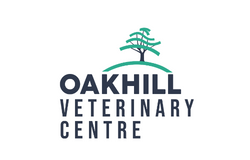ENVIRONMENTAL MASTITIS
Whilst the risk of environmental mastitis is present year-round, some farms see an increased incidence during periods of hot, humid weather. Warm, humid environments promote the survival and replication of mastitis-causing pathogens, particularly in bedding. Grazing herds may also experience an increase in environmental mastitis cases if grazing areas become poached or fly control is inadequate.
Environmental mastitis pathogens may be splashed onto udders in slurry or water, or transferred from contaminated bedding, hands, shared udder cloths and other equipment. Bedding, particularly if it is allowed to become damp whilst in storage or contaminated with slurry whilst in use, is a significant source of environmental pathogens.
Some pathogens have a particular affinity for certain bedding products, for example, Klebsiella lives happily in damp wood-based products, whilst Strep. uberis thrives in straw. Pseudomonas likes to live in water tanks, which is why only water direct from the mains should be used for parlour cleaning.
Rough or damaged teats can increase the likelihood of mastitis, as damaged skin is more likely to harbour bacteria and is difficult to clean and disinfect.
The severity of environmental mastitis varies from a mild elevation in SCC to full blown toxic “E. coli” mastitis with a down cow in toxic shock, and everything in between. Summer mastitis is caused by a group of bacteria found in the environment and transferred by flies. Therefore fly control is an important prevention strategy.
CONTROL STRATEGIES FOR ENVIRONMENTAL MASTITIS
Cow housing:
- Good cow comfort – comfortable, adequately sized cubicles with suitable, clean, dry bedding. Lime can be used to reduce bacterial numbers in cubicle bedding.
- Ensure bedding stays dry in storage.
- Ensure good ventilation and drainage to help remove as much moisture as possible
- Clean floors and good cow flow – prevent slurry pooling, particularly on entry and exit to the parlour/robots and other bottleneck areas. This will help to reduce slurry splashing and contamination of the legs, udder and teats with faeces.
Parlour routine
- Wear gloves.
- Foremilking – for prompt detection of clinical cases.
- Good milking machine function – to minimise teat-end damage, chapped teats and blackspot (when damaged teat skin becomes infected). Check ACR’s, liners, vacuum and pulsate.
- Pre-milking teat disinfection, which removes environmental contaminants and post-milking teat disinfection for the control of contagious mastitis.
- Loafing time post-milking – promote some standing time on a clean surface for teat-dip products to dry and teat canals to start to close. Providing fresh feed at the feed barrier is one approach to this.
Dry cow management:
- Clean dry, comfortable housing (or unpoached field if grazed).
- Appropriate stocking density and diet.
- Appropriate dry cow therapy depending on previous SCC recordings, clinical mastitis history and teat condition. Careful application of intramammary products – practise a good aseptic technique (as sterile as possible!).
Nutrition:
- Optimal energy balance to promote healthy immune function.
- Avoid loose faeces (SARA).
- Prevent metabolic disease. Subclinical milk fever reduces the ability of the cows immune response to fight infections, including mastitis.
The incidence and cause of clinical and subclinical mastitis cases should be regularly monitored. We use the industry initiative QuarterPRO to promote and improve udder health on an individual farm basis. This includes data analysis, an on-farm assessment of potential risk factors and implementing a control plan tailored to your farm.
Speak to one of our vets on 01772 861300 for more info.
